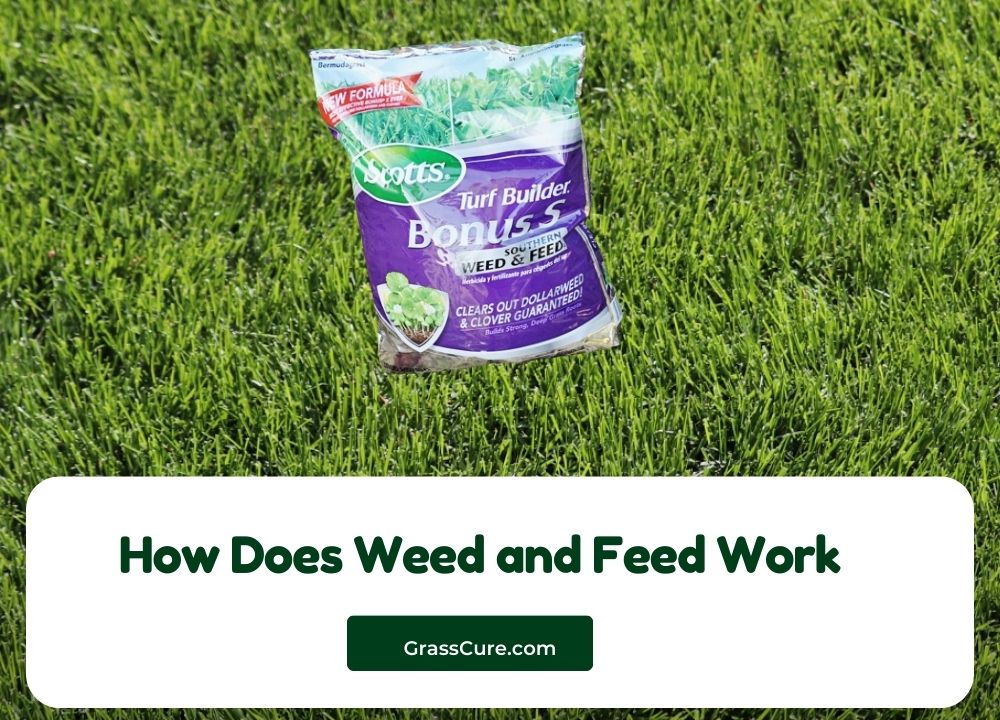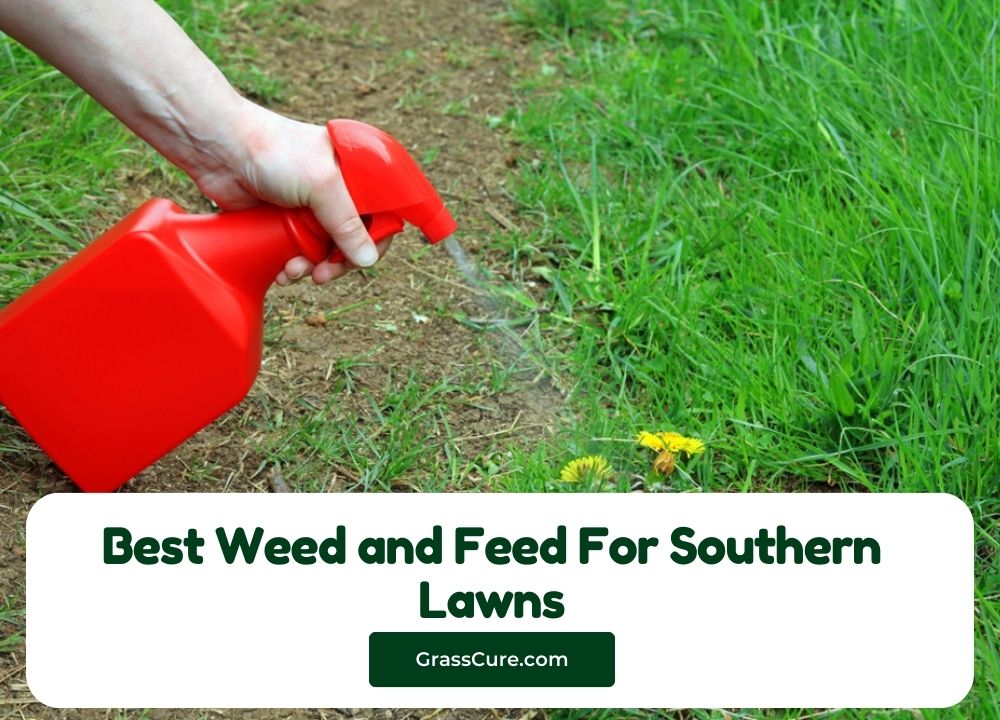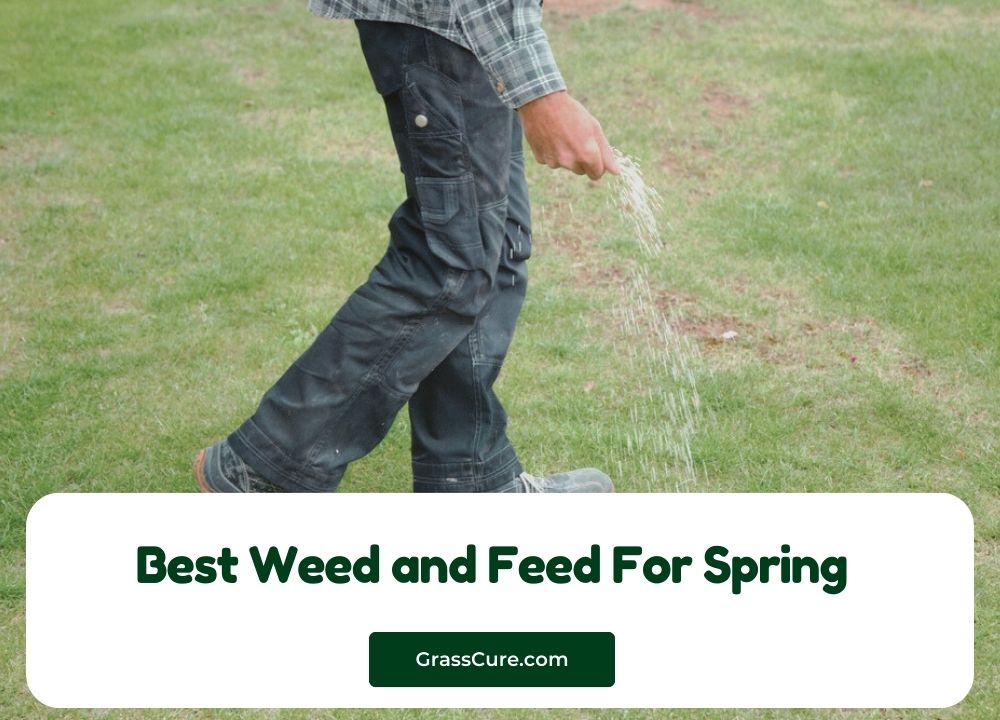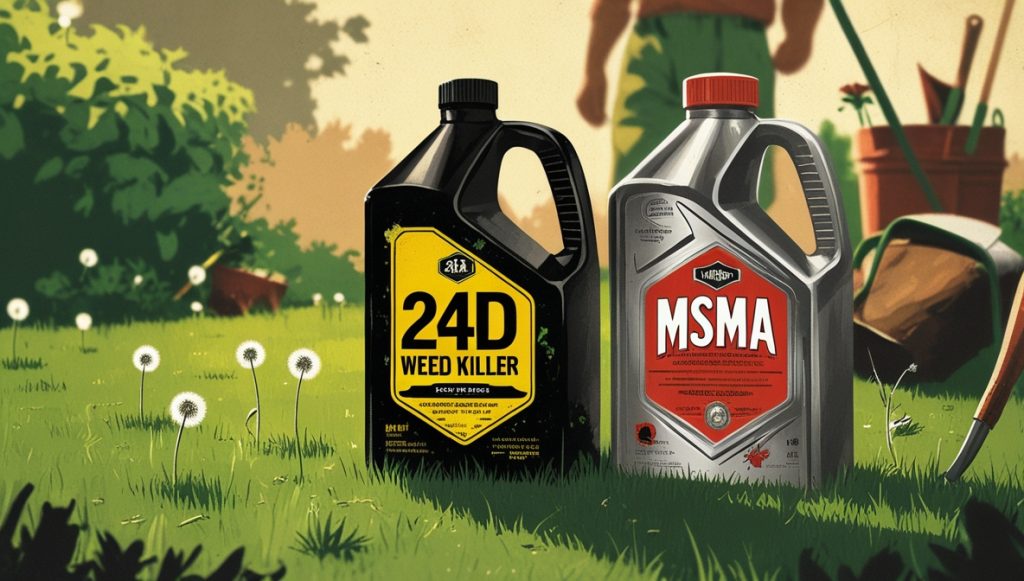Maintaining a lush, green lawn is a source of pride for many homeowners, but achieving that vibrant landscape can be a challenging endeavor. Among the various tools and products available to help you achieve a healthy yard, weed and feed stands out as a popular choice. But what exactly is weed and feed, and how does it work?
Weed and feed is a dual-purpose product that combines herbicides for weed control with fertilizers to nourish your grass. This one-stop solution simplifies lawn care, allowing you to tackle two critical tasks simultaneously. However, understanding how weed and feed works is essential for effective application and to avoid potential pitfalls.
In this blog post, we’ll explore the science behind weed and feed, how to apply it for optimal results, and some best practices to ensure your lawn thrives while keeping unwanted weeds at bay. Whether you’re a seasoned gardener or a novice homeowner, this guide will equip you with the knowledge to enhance your lawn care routine.
Contents
What is Weed and Feed?
Weed and feed products are specially formulated lawn care solutions that combine two essential components: herbicides and fertilizers. This dual-action approach targets weeds while simultaneously providing essential nutrients to your grass, making it a popular choice for homeowners looking to maintain a healthy, vibrant lawn.
Types of Weed and Feed
Granular Weed and Feed:
These are dry, granular products that can be spread across the lawn using a broadcast spreader.
Granular formulations often release nutrients slowly, providing extended feeding to the grass.
Liquid Weed and Feed:
These products come in a liquid form, typically in a concentrated solution that you mix with water before application.
Liquid formulations may act faster, making them effective for immediate weed control.
Common Ingredients
Weed and feed products typically contain a mix of:
Herbicides: Chemicals designed to kill or inhibit the growth of weeds. Different products target specific types of weeds, including broadleaf weeds (like dandelions) and grassy weeds (like crabgrass).
Fertilizers: Nutrients such as nitrogen, phosphorus, and potassium that promote healthy grass growth. These nutrients help improve the lawn’s resilience and appearance.
Overall, weed and feed products offer a convenient solution for lawn care by simplifying the process of weed control and fertilization into a single application. However, understanding the specific product and its ingredients is crucial for achieving the best results while ensuring the health of your lawn.
How Weed and Feed Works
Understanding how weed and feed products function is essential for achieving a healthy lawn while effectively managing unwanted weeds. These products operate through two primary mechanisms: herbicide action and fertilization.
Mechanism of Action
Herbicides
Targeting Weeds: The herbicides in weed and feed products work by disrupting specific physiological processes in targeted weeds. For instance, many herbicides inhibit photosynthesis or interfere with hormonal systems that control plant growth.
Types of Herbicides:
Pre-emergent Herbicides: These are applied before weeds germinate, creating a barrier that prevents seeds from sprouting. They are effective against annual weeds like crabgrass.
Post-emergent Herbicides: These are designed to kill existing weeds after they have emerged. They are particularly effective against broadleaf weeds such as dandelions and clover.
Fertilizers
Nourishing the Grass: The fertilizers included in weed and feed provide essential nutrients that promote robust grass growth. Nitrogen encourages leafy growth, phosphorus supports root development, and potassium enhances overall plant health.
Nutrient Release: Granular weed and feed products often contain slow-release fertilizers, which gradually supply nutrients over time, ensuring sustained feeding for your lawn.
Timing and Application
Best Times to Apply:
The timing of your application is crucial for effectiveness. Spring and fall are generally the best times to use weed and feed products. Spring applications help manage early weeds while promoting vigorous grass growth, while fall applications strengthen the lawn before winter.
Proper Application Techniques:
To maximize the benefits of weed and feed, it’s important to follow the manufacturer’s instructions carefully. This includes:
Choosing the Right Conditions: Apply when the lawn is dry, and avoid windy days to prevent drift. Mowing your grass to the appropriate height before application also helps the product penetrate effectively.
Even Distribution: Use a broadcast spreader for granular products to ensure an even application. For liquid formulations, use a sprayer to cover all areas thoroughly.
By understanding how weed and feed products work and applying them correctly, you can effectively manage weeds while promoting a lush, healthy lawn.
Benefits of Using Weed and Feed
Weed and feed products offer several advantages for homeowners seeking to maintain a healthy, beautiful lawn. Here are some key benefits:
1. Convenience of Dual Action
Weed and feed combines two essential lawn care tasks into one application. By addressing weed control and fertilization simultaneously, you save time and effort compared to applying herbicides and fertilizers separately.
2. Improved Lawn Health
The nutrients provided by the fertilizer component of weed and feed help promote stronger, more resilient grass. A well-nourished lawn can better compete against weeds, reducing the chances of weed infestation in the future.
3. Enhanced Appearance
Regular use of weed and feed can lead to a lush, green lawn that enhances the overall curb appeal of your home. By controlling weeds and providing essential nutrients, your grass can thrive, resulting in a healthier-looking landscape.
4. Cost-Effectiveness
Using a combined product can be more economical than purchasing separate weed control and fertilization products. This can help you stay within your budget while still achieving effective lawn care results.
5. Time-Saving
With weed and feed, you can complete two important tasks in one go, reducing the time spent on lawn maintenance. This is particularly beneficial for busy homeowners who may not have the time for multiple applications throughout the season.
6. Ease of Use
Most weed and feed products come with clear instructions for application, making them accessible for homeowners of all experience levels. The straightforward process allows even novice gardeners to achieve professional-looking results with minimal effort.
In summary, using weed and feed products provides a range of benefits that contribute to a healthier lawn while saving time and effort. When applied correctly, these products can help you achieve the beautiful, weed-free yard you desire.
Potential Drawbacks
While weed and feed products offer many benefits, it’s important to be aware of potential drawbacks. Understanding these issues can help you make informed decisions about your lawn care regimen. Here are some common concerns associated with using weed and feed:
1. Risk of Over-Application
One of the main risks of using weed and feed is the potential for over-application, which can lead to lawn damage. Excessive fertilizer can cause grass burn, resulting in unsightly brown patches. It’s crucial to follow the manufacturer’s instructions regarding the correct application rates to avoid this issue.
2. Impact on Beneficial Insects and Plants
The herbicides in weed and feed products may not only target weeds but can also affect beneficial insects and surrounding plants. Pollinators, like bees, and other helpful organisms might be harmed by exposure to these chemicals. Using these products requires careful consideration of the broader ecosystem in your yard.
3. Environmental Concerns
There are environmental implications associated with the use of chemical herbicides and fertilizers. Runoff from treated lawns can contaminate nearby water sources, leading to nutrient pollution and harming aquatic ecosystems. Homeowners should consider using eco-friendly alternatives or practicing more sustainable lawn care methods.
4. Limited Effectiveness on Some Weeds
Not all weeds are equally affected by weed and feed products. Some persistent or tough-to-control species may require targeted treatments with specific herbicides. Relying solely on weed and feed may not adequately address certain weed problems, necessitating additional lawn care strategies.
5. Specific Timing Requirements
Successful application of weed and feed products depends on proper timing. Applying them too early or too late in the season can diminish their effectiveness. Homeowners need to be attentive to seasonal conditions and follow guidelines closely to achieve the desired results.
In conclusion, while weed and feed products can be an effective tool for lawn care, it’s essential to weigh these potential drawbacks against their benefits. By being mindful of these issues, you can make informed decisions that ensure a healthy lawn while minimizing negative impacts on your garden and the environment.
Best Practices for Using Weed and Feed
To maximize the effectiveness of weed and feed products while minimizing potential drawbacks, it’s essential to follow best practices during application. Here are some key tips for successful use:
1. Choose the Right Product
Select a weed and feed product that is specifically designed for your type of grass and the weeds you’re targeting. Read the label carefully to ensure compatibility with your lawn and to understand the herbicides included.
2. Timing is Key
Seasonal Considerations: Apply weed and feed in the spring when weeds are actively growing, or in the fall to strengthen your lawn before winter. Timing can vary based on your geographical region and the specific weeds you’re targeting.
Weather Conditions: Choose a calm, dry day for application. Avoid windy conditions that could cause drift and rain within 24 hours of application, as this can wash away the product before it has a chance to work.
3. Prepare Your Lawn
Mow Before Application: Mow your grass to the recommended height before applying weed and feed. This allows for better absorption and penetration of the product.
Clear Debris: Rake up any leaves, sticks, or other debris that might obstruct even application across your lawn.
4. Follow Application Instructions
Read the Label: Always follow the manufacturer’s instructions for application rates and methods. Different products have varying concentrations of active ingredients, so adherence to guidelines is critical.
Use the Right Equipment: For granular products, use a broadcast spreader for even distribution. For liquid formulations, use a sprayer to cover all areas thoroughly.
5. Monitor Lawn Health
After applying weed and feed, monitor your lawn for signs of improvement and any adverse effects. Adjust your lawn care practices as needed based on the results you observe.
6. Maintain Regular Lawn Care
Incorporate weed and feed into a broader lawn care regimen that includes proper mowing, watering, and aeration. Regular maintenance helps improve the overall health of your grass, making it more resilient against weeds.
7. Consider Alternatives
If you have concerns about chemical applications, explore organic or natural alternatives to weed and feed. Many eco-friendly options are available that can provide effective weed control without harmful side effects.
By following these best practices, you can effectively utilize weed and feed products to enhance your lawn’s health while minimizing risks. A well-cared-for lawn not only looks great but also contributes to a healthier environment overall.
Alternatives to Weed and Feed
While weed and feed products can be effective, some homeowners prefer alternatives for various reasons, such as environmental concerns or a desire for more targeted lawn care. Here are several alternatives to consider:
1. Separate Herbicide and Fertilizer Applications
- Targeted Treatments: Instead of using a combined product, consider applying herbicides and fertilizers separately. This allows you to tailor each application to the specific needs of your lawn and the weeds you are trying to control.
- Timing Flexibility: By separating the applications, you can apply fertilizers when your grass needs them most and herbicides when weeds are actively growing, increasing the effectiveness of each treatment.
2. Natural and Organic Weed Control
- Corn Gluten Meal: This natural pre-emergent herbicide prevents weed seeds from germinating. It’s best applied in early spring before weeds start to sprout.
- Vinegar: Household vinegar (with at least 5% acetic acid) can be used as a natural post-emergent herbicide for young, actively growing weeds. Apply it directly to the leaves on a sunny day for best results.
- Boiling Water: Pouring boiling water over weeds is a simple and effective way to kill them without chemicals.
3. Cultural Practices for Lawn Health
- Proper Mowing: Keeping your grass at the recommended height for your specific type can shade out weeds and reduce their growth.
- Aeration: Aerating your lawn helps improve soil health and reduces compaction, promoting healthier grass that can outcompete weeds.
- Mulching: In garden beds and around trees, using mulch can suppress weed growth while retaining moisture and improving soil quality.
4. Diverse Planting
- Mixed Planting: Consider incorporating a variety of grass species and other plants in your lawn. Diverse plantings can create a more resilient ecosystem that competes better with weeds.
- Ground Covers: Using ground covers in areas of your lawn where grass struggles can help prevent weeds from taking hold while providing an attractive landscape.
5. Soil Testing and Amendments
- Soil Testing: Conducting a soil test can help you understand nutrient deficiencies or pH imbalances in your lawn. Based on the results, you can amend the soil with specific nutrients or organic matter to promote healthy grass growth.
- Compost: Adding organic compost can improve soil structure, increase nutrient availability, and promote healthy root systems, all of which contribute to a vigorous lawn that can resist weeds.
By exploring these alternatives, homeowners can develop a more sustainable lawn care routine that promotes healthy grass while minimizing the use of chemicals. Each approach offers unique benefits, allowing you to choose the best method for your specific lawn care needs.
Conclusion
Weed and feed products can be a convenient and effective solution for maintaining a lush, healthy lawn while managing unwanted weeds. By understanding how these products work and following best practices for their application, homeowners can enjoy a vibrant yard with minimal effort. However, it’s essential to consider the potential drawbacks, including environmental impacts and risks of over-application.
For those seeking alternatives, numerous options are available that can also contribute to a thriving lawn. From separate applications of herbicides and fertilizers to natural weed control methods and cultural practices, there are plenty of strategies to suit different preferences and values.
Ultimately, the key to a successful lawn care routine lies in understanding your specific needs, monitoring the health of your grass, and being proactive in your approach. Whether you choose weed and feed or an alternative method, a well-maintained lawn not only enhances your home’s curb appeal but also contributes to a healthier environment.






